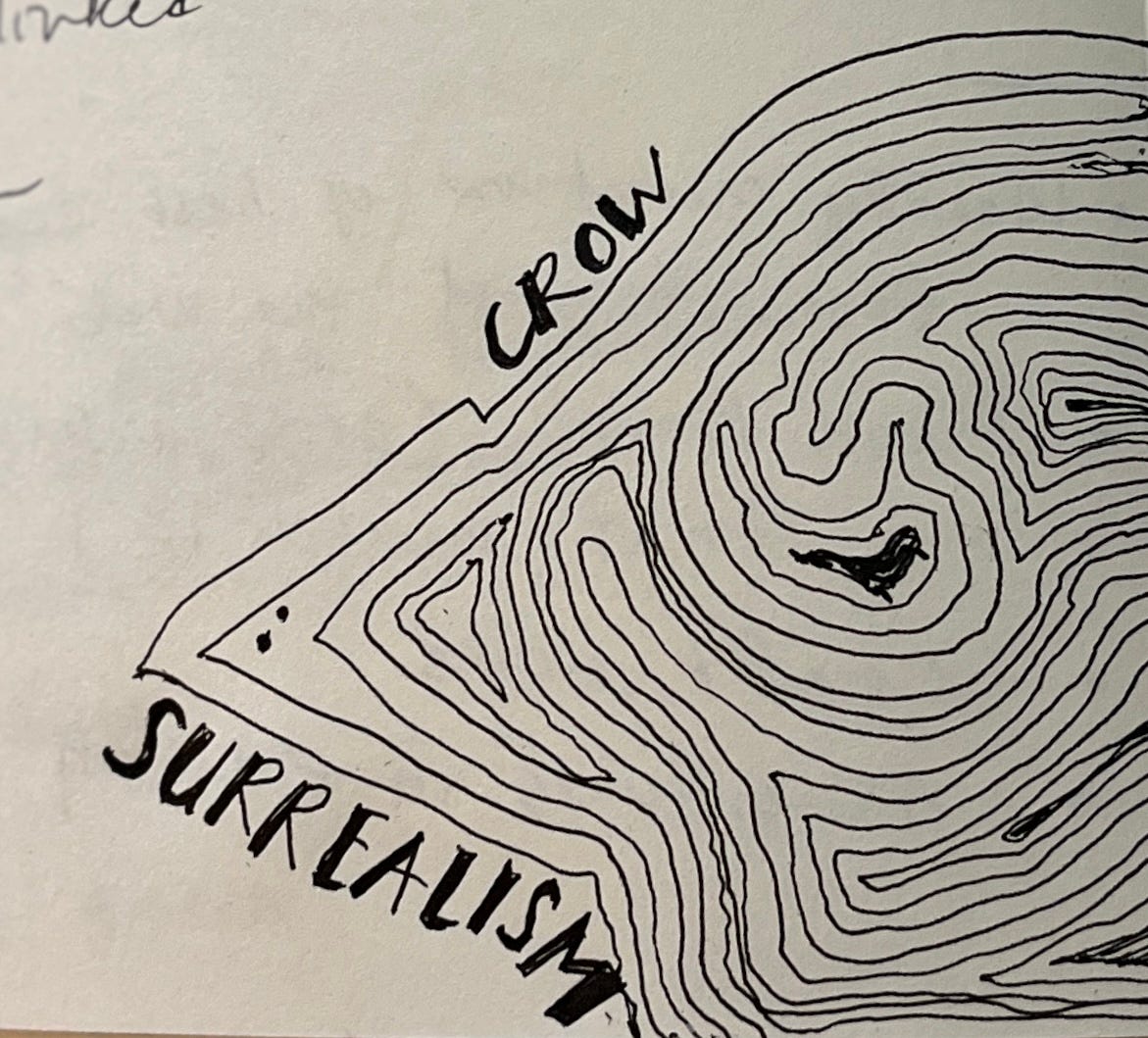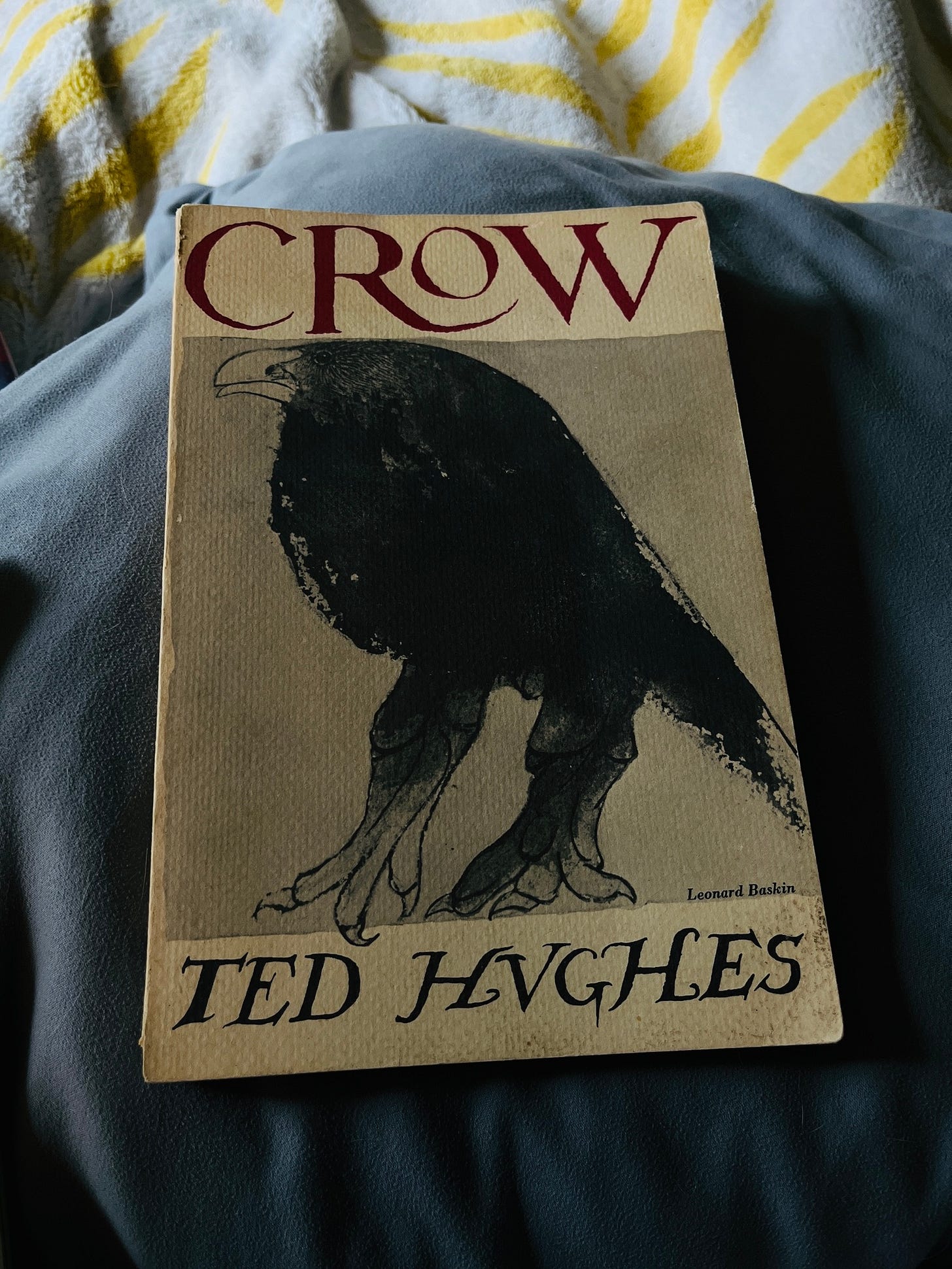A crow is dead in the nook created by three lavender bushes in my front yard. It must have crawled into what looks like a cozy den to die. Aaron says the crow has some gray feathers, so maybe it was just this crow’s time. I don’t know. I didn’t look until later when I was chopping down last year’s goldenrod, which lives behind the lavender. I saw the crow lying there in its secret garden, but just black feathers.
I didn’t see a crow funeral, either, but by all accounts there likely was one.
I didn’t know how to feel at first. The discovery was jarring. But now I feel somewhat honored that a crow chose my lavender, herb of calm.
Eventually, it will start to smell of death, but right now it’s just a motionless crow. Why haven’t the neighborhood cats dragged it off, four——maybe more——nights now, and still there, still intact.
I dreamed that the crow was getting bigger and bigger, that the bushes were shrinking around it.
I dreamed that we put a second dead bird beside the crow.
+
There are so many poems about crows.
There’s Ted Hughes’s eponymous collection, which are some of the most stunning and strange crow poems I’ve ever read. Hughes, the person, is tricky and complex——or worse, bad and woman-hating, enough that two of his wives (Sylvia Plath being one) committed suicide while married to him. I know a bit about Plath, I don’t know enough to say, really, and this raises a much larger question about who we read and how we decide what to read based on a person’s deeds. So I’ll leave that for another day.
Here’s one in the style of biblical lineage (think Jesus’s “earthly” lineage in the biblical books of Matthew and Luke):
Here’s another, by Cornelius Eady. It’s a less oracular/biblical poem, but sings into the human condition by virtue of exquisite movement:
Eady writes, “Such a humorous dance, / As they try to set things right, / As the wind reduces them.” These are the lines I can’t shake. As the wind reduces them——no mention of how or to what——followed by a new stanza and the line, “Such a sorrowful dance,” after all that drunken wobbling above it. And then the turn to the embarrassment of love.
One of the reasons I love poetry: unexpected turns, lines that seem to spring up from the ever-gliding subconscious. They make such sense, but how?
Here are two more you should read!!!
Ann Lauterbach’s “Untitled (Crow),” featuring a raven and full of beautiful strangeness.
Kay Ryan’s “Felix Crow,” in which Ryan describes a swaggering crow, maybe the every-crow, and concludes, “And every time /
I like him / when we meet.”
So, here’s to dying crows at the beginning of spring when everything is starting to bud and bloom. Here’s to dying crows finding their way to me, crow lover. To the passing of life into life. To the lavender and daffodils that will take up crow’s bodies into their bodies and be fed. Amen.










I read that there's a woman in Greensboro who has trained her local crows to come when she calls them and chase hawks away from her chickens. I have no idea whether this is true or not, but it is nonetheless awesome.